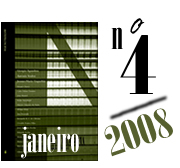The Infantile and the Salvage in the Philosophy of New Music
Abstract
The study investigates, based on the Philosophy of New Music, the fi rst phase of the composer Igor Stravinsky. The text is divided in two major parts. The fi rst one specifi cally examines the ballet The Rite of Spring. The second part analyzes the opera Renard. The research also tries to explain the theoretical sources used by the philosopher Theodor Adorno in the elaboration of his mentioned work, in particular: Freud, Kant e Aristotle. I have concluded that Stravinsky’s fi rst phase is formed by wild and infantile elements, because it is in this phase that the composer intercalates between primitive rituals and fairy tales. Adorno, on the other hand, tried to demonstrate, based on Freudian studies, the coincidence between psychological structures of savages, children and neurotics, to unmask the regressive character of Stravinsky’s music. Such movement of modern music toward the stylized barbarity may also be interpreted as a failure of Kant’s project of modernity, which, above all, meant man’s freedom from his infancy.
Downloads
References
ADORNO, T. W. Filosofi a da nova música. São Paulo: Perspectiva, 1989.
ARISTÓTELES. Poética. 2. ed. São Paulo: Abril Cultural, 1978. (Os Pensadores).
CARPEAUX, O. M. O livro de ouro da história da música. 2. ed. Rio de Janeiro: Ediouro, 2001.
FREUD, S. O interesse científi co da psicanálise. Rio de Janeiro: Imago, 1974.
FREUD, S. Totem e tabu. Rio de Janeiro: Imago, 1974.
FREUD, S. A ocorrência, em sonhos, de material oriundo de contos de fadas. Rio de Janeiro: Imago, 1969.
KANT, I. Resposta à pergunta: Que é “Esclarecimento”? In: KANT, I. Textos seletos. 3. ed. Petrópolis: Vozes, 2005. cap. 4, p. 63-71.
Copyright (c) 2017 Revista ArteFilosofia

This work is licensed under a Creative Commons Attribution-NonCommercial-ShareAlike 4.0 International License.
Autores que publicam nesta revista concordam com os seguintes termos:
- Autores/as mantém os direitos autorais e concedem à revista o direito de primeira publicação, com o trabalho simultaneamente licenciado sob a creativecommons.org/licenses/by-nc-sa/4.0/ que permite o compartilhamento do trabalho, com reconhecimento da autoria e publicação inicial nesta revista.
- Autores/as têm autorização para assumir contratos adicionais separadamente, para distribuição não-exclusiva da versão do trabalho publicada nesta revista (ex.: publicar em repositório institucional ou como capítulo de livro), com reconhecimento de autoria e publicação inicial nesta revista.


